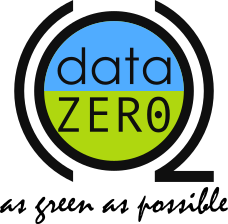Any solution for electricity and IT management must maintain the health state of the infrastructure in nominal conditions. IT services must be resilient to electrical problems and their operation must be assured.
The methodology we propose is:
1. using the characterization of power sources, we will optimize the decision process managing how to balance electricity production and storage among potential power sources (multisource), how to optimize the electricity flow in the system, in order to ensure a given level of constrained energy demand.
2. using the characterization of hosted services in the cloud, we will optimize the decision process solving how to balance the service execution among the computers, how to schedule and place hosted services in the system, in order to ensure resilience in a dynamic and prone-to-failure power distribution system.
3. using the two preceding decision processes, we will introduce a negotiation loop able to match the constraints coming from both sides (adapting energy production depending on the computing demand and adapting computing service level depending on the energy offer) and optimize the renewable energy utilization.
While the computer level and the energy level can be treated separately, we believe there is a need to formulate a global optimization problem mixing constraints, scheduling and requests from both sides. IT tasks dispatching should take into account the source capacities and, depending on the foreseen workflow, the different energy sources should be used at their optimal functioning. At energy level, hybridization of different sources (or several sources with lower power than the maximum requested) is challenging in the architecture design (dimensioning, type of suitable sources, etc.) and global management of energy flow transiting between sources is of paramount importance.
The main targets are middle-size datacenters where IT load can be managed either through Virtualization or Cloud orchestrator (up to 1000 m2 and 1 MW) commonly seen in enterprise and public institutions.
The main outcomes are the optimization of datacenters powered partially with renewable sources and the production of a simulation toolkit. When developed this simulation toolkit will allow for testing, tuning and comparing several mixes of renewable sources, electrical and computer equipment, and scheduling policies. It will provide recommendations on the IT and electrical redundancies in hybrid architectures for reaching a given level of performance (high availability in particular).
DATAZERO brings together an interdisciplinary team (academic and industry, from both IT and electrical engineering) to find suitable solutions in a cooperative way.
